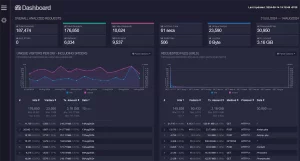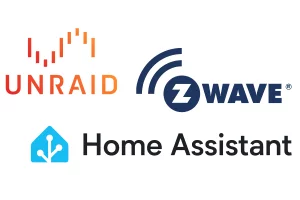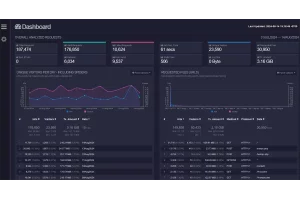OWASP Top 10: Understanding and Mitigating Common Web Vulnerabilities

The Open Web Application Security Project (OWASP) maintains a regularly updated list of the top 10 most critical web application security risks. Understanding these vulnerabilities and knowing how to protect against them is crucial for any web developer. Let's take a detailed look at each item on the list and discuss strategies for their mitigation.
Table of Contents
- 1. Injection
- 2. Broken Authentication
- 3. Sensitive Data Exposure
- 4. XML External Entities (XXE)
- 5. Broken Access Control
- 6. Security Misconfiguration
- 7. Cross-Site Scripting (XSS)
- 8. Insecure Deserialization
- 9. Using Components with Known Vulnerabilities
- 10. Insufficient Logging & Monitoring
- Conclusion
1. Injection
One of the most rampant security threats across the World Wide Web, injection vulnerabilities are a result of loopholes in a web application's code that permit an attacker to forward malicious data to another system.
How it Works
Injection vulnerabilities arise when an application dispatches untrusted data directly to an interpreter. Picture it this way: your application is a gatekeeper, and every time it receives data, it should scrutinize it before allowing it entry. But if it doesn’t, malicious data can infiltrate, potentially causing havoc. The most notorious example of this is SQL injection, where attackers can embed malicious SQL code within seemingly harmless user-provided data. This tricks the back-end SQL server into executing unintended commands, such as giving up all the records from a database table.
Mitigation Strategies
- Use Parameterized Queries or Prepared Statements: Instead of crafting SQL queries with raw user inputs, use parameterized queries. This ensures that user input is always treated as data and not executable code.
- White-list Input Validation: Rather than blacklisting known bad input (which evolves continuously), only accept known good input. This can significantly reduce the risk.
- Limit Database Permissions: It's essential to grant only necessary permissions to your database accounts. An application should never run with admin-level access; limit its powers to only what it needs.
2. Broken Authentication
In the vast expanse of the internet, where identity plays a critical role, any flaw in its validation could be catastrophic. Broken Authentication occurs due to improperly implemented user authentication mechanisms, opening the door for attackers to impersonate other users.
How it Works
Imagine leaving your home's front door unlocked in a neighborhood known for burglaries. Any burglar can stroll in, undetected. Similarly, authentication flaws enable attackers (whether manual or bots) to use various techniques like password spraying or credential stuffing to attempt gaining control over user accounts.
Mitigation Strategies
- Implement Multi-factor Authentication (MFA): Two (or more) is better than one. By using MFA, even if an attacker gets a user's password, they'll still need another verification method to access the account.
- Generic Login Error Messages: Always use a uniform error message for all login failures. This prevents attackers from knowing if they got half the credential set right, like a valid username.
- Server-side Session Management: It's pivotal to use a secure, built-in session manager on the server side. This ensures that random session IDs are generated, minimizing the risk of session fixation or session side-jacking attacks.
3. Sensitive Data Exposure
The name says it all. In an era where personal data is the new gold, applications sometimes fail to guard this treasure, exposing sensitive information like credit card details, Social Security numbers, or confidential user details.
How it Works
A failure in the system's data protection mechanisms can lead to unintended data exposure. This could be due to misconfigured database access, weak encryption, or even just mistakenly exposing data in URLs or error messages. Remember, data leaks aren’t always vast and conspicuous; sometimes, they trickle, one drop (or record) at a time.
Mitigation Strategies
- Encrypt, Encrypt, Encrypt: Whether data is stationary (at rest) or in motion (in transit), it should be encrypted. Consider using strong algorithms and key management practices.
- Principle of Least Privilege: Collect only the data you require. Extra, unnecessary data not only burdens storage but also amplifies risks. After all, you can't lose what you don't have.
4. XML External Entities (XXE)
XML, despite being a versatile and well-adopted markup language, is fraught with risks when improperly parsed. XXE attacks exploit the XML parsing, coercing it to reveal internal files, expose internal port details, or even launch internal attacks against other systems.
How it Works
When an XML parser processes an XML input, it can get duped into fetching and executing files from the local server or even from the internal network. For instance, a crafty attacker might embed a reference to an internal file within an XML document, thereby tricking the parser into retrieving and displaying that file.
Mitigation Strategies
- Disable XXE in XML Parsers: Most XML parsers support XXE by default. Ensure that you disable or restrict it wherever possible. Configuration is often straightforward, but it's vital to verify.
- Switch to Simpler Data Formats: In many cases, you might find that JSON serves your needs just as well as XML, with fewer associated risks. And when you must use XML, avoid serialization of sensitive data.

5. Broken Access Control
In the digital realm, not every user should have a key to every door. Broken Access Control transpires when users can perform actions or access data that they shouldn't be able to, allowing attackers to exploit these permissions to their advantage.
How it Works
Suppose you visit a library where every book is open for borrowing, even rare manuscripts that are supposed to be "view only". You could walk out with a wealth of information without breaking a sweat. Similarly, in web applications, when access controls are misconfigured, an average user might access admin features or view data they shouldn't be privy to.
Mitigation Strategies
- Implement Role-based Access Control (RBAC): Clearly define user roles and assign permissions accordingly. For instance, a 'viewer' might read content but not modify it, while an 'editor' can make changes.
- Periodic Review of Access Controls: As applications evolve, so do user roles and required permissions. Regularly revisit and update access controls to match current needs.
6. Security Misconfiguration
Like a sprawling mansion with countless doors and windows, each component of a web application introduces potential risks. A security misconfiguration can happen at any level of an application stack, revealing sensitive information and providing a bounty for attackers.
How it Works
Imagine your home has surveillance cameras, but they’re not turned on. A security misconfiguration is similar. It might be a database exposed to the world without a password, verbose error messages revealing too much about your infrastructure, or unnecessary services running, providing potential entry points for malicious actors.
Mitigation Strategies
- Automated Review of Configurations: Adopt tools that automatically verify the security configurations of your applications and infrastructure. Manual checks are prone to oversights.
- Repeatable Hardening Processes: Standardize a process to ensure every environment you deploy, whether development, staging, or production, is properly configured and locked down against vulnerabilities.
7. Cross-Site Scripting (XSS)
Like the graffiti artists of the digital world, attackers exploit XSS vulnerabilities to inject malicious scripts into websites that then run on another user's browser. These scripts can steal information, spread malware, deface websites, or more.
How it Works
Consider a communal notice board. Now, suppose someone not only puts up a regular notice but also attaches a device that secretly records conversations of anyone who comes to read it. XSS operates similarly. Websites that don't validate or escape their inputs properly might inadvertently serve malicious scripts to their users. These scripts can then access cookies, session tokens, or other sensitive information from the user's browser.
Mitigation Strategies
- Employ HTTP-only Cookies: This makes them inaccessible to scripts running in the browser, shielding them from theft through an XSS attack.
- Leverage Content Security Policy (CSP): CSP is like an additional security layer, preventing malicious scripts from running even if they manage to inject themselves.
- Escaping Untrusted HTTP Request Data: Always validate and escape data before rendering it in HTML. This ensures even if malicious data is inserted, it won't execute.
8. Insecure Deserialization
While serialization and deserialization are fundamental in computer systems, enabling the conversion of complex objects into byte streams (and vice versa), mishandling can introduce severe vulnerabilities. Insecure deserialization can grant attackers a pathway to execute malicious code, dodge authentication, or initiate other malicious activities.
How it Works
Remember the childhood game of passing whispered messages around a circle of friends? If one friend maliciously changes the message, the result can be comical—or catastrophic. In the digital realm, when objects are serialized for transport or storage, they're transformed into a string format. If an attacker can modify this serialized object and it's insecurely deserialized, the attacker's malicious code could get executed.
Mitigation Strategies
- Avoid Deserialization of Untrusted Data: Simply put, don't trust user-provided serialized objects. If you must deserialize, ensure the data comes from a trusted source.
- Implement Integrity Checks: Before deserializing, check if the data has been tampered with. One way is to employ digital signatures.
9. Using Components with Known Vulnerabilities
It's not just your code you need to worry about. The libraries and frameworks you leverage can also be a source of vulnerabilities. Often, applications include components with known security flaws, which can be exploited just as if they were vulnerabilities in the application itself.
How it Works
Picture your application as a brick mansion. While you've built most of it, some bricks were sourced from different places. If even one of these bricks is faulty, it can weaken the entire structure. Using components with known vulnerabilities is like using these faulty bricks. Attackers, aware of these vulnerabilities, specifically target them to gain unauthorized access or induce malicious activities.
Mitigation Strategies
- Regularly Update and Review Component Usage: Keeping components updated ensures you benefit from patches that fix known vulnerabilities. Use tools that can automatically check for outdated components.
- Isolate and Minimize Dependencies: Consider using containerization to isolate components. Also, if a component or library isn't necessary, don't include it. The less you use, the less you expose.
10. Insufficient Logging & Monitoring
The silent killers in the digital realm, insufficient logging and monitoring, often give attackers the time and invisibility they need to perfect their intrusion. A lack of adequate logging means there might be no trace or record of malicious activities, and inadequate monitoring means no timely detection or alerts.
How it Works
Imagine you own a shop where the CCTV doesn't record anything and the security guard rarely checks the monitors. An intruder could comfortably roam around, doing as they please. Similarly, without adequate logging and monitoring, attackers can persist in systems without detection, potentially leading to more substantial data breaches, system damages, or other malicious outcomes.
Mitigation Strategies
- Implement Effective Logging: Log not just successes, but all failures, anomalies, and system events. This creates a trail that can be reviewed for suspicious activities.
- Set Up Real-time Monitoring and Alerts: Don't wait to stumble upon the traces of an attacker. Set up systems that actively monitor logs and trigger alerts for abnormal activities.
- Regularly Audit and Review Logs: Scheduled reviews can identify patterns or persistent threats, ensuring timely counteraction.
Conclusion
In essence, safe coding practices and conscientious development are key weapons in the fight against web vulnerabilities. The meticulous mitigation practices laid forth constitute reactive measures, whereas prevention, the proactive approach, relies heavily on grasping the mechanisms and realm of web operations.
While the landscape of vulnerabilities continues to morph, a sound understanding of the OWASP Top 10 suffices for web developers to build secure, resilient applications, righteously serving the purpose of the Web while upholding honesty, trust, and user safety.









